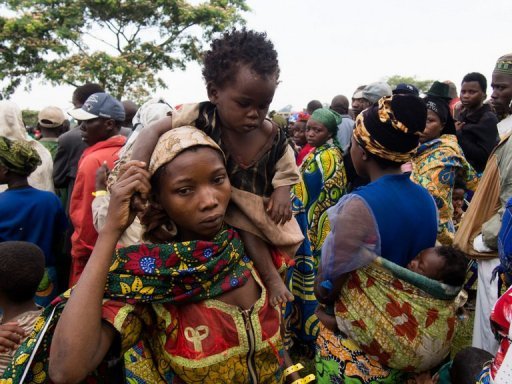By Danielle L. Gwozdz
Impunity Watch Reporter, Africa
KINSHASA, Democratic Republic of the Congo – 30,000 refugees flee the Democratic Republic of the Congo (DRC) to neighboring Uganda after a rebel attack. Al-Qaeda linked rebels, the Allied Democratic Forces (ADF), killed and also kidnapped some people, while others crossed into Uganda to save their lives. This attack raises fears of a renewed campaign and a refugee influx.

“We heard rumours there were rebels coming but we did nothing,” Evaketi Tibalumanya, a Congolese Refugee, told Al Jazeera, holding one of her nine children in her lap. “Then they came by surprise at night. They caught a person and killed him. We escaped death because we ran away.”
Ugandan army spokesman Paddy Ankunda stated that troops have been sent to reinforce positions along the border with Congo.
“We have deployed enough forces on our common border to ensure these terrorists (ADF) do not cross the line, because Uganda is their target,” Ankunda told AFP.
Uganda worries that an unchecked build-up of the ADF could pose a major threat to its Lake Albert region where crude reserves have been discovered (estimated at 3.5 billion barrels), and production of this is expected to commence soon.
The Ugandan military also fear that ADF may have gained attack skills from al Shabaab, the al-Qaeda linked insurgent group operating in Samalia, which could now be used in Uganda.
“They’ve been training on IEDs . . . they’re planning to use small bombs on the population. We’re taking that very seriously because that means that given the porousness of our borders, they can easily sneak in sleeper cells inside our towns and attack our people,” Ankunda said.
The ADF waged an insurgency against Kampala in the late 1990s from its bases in the Ruwenzori Mountains and across the frontier in the eastern Congo jungle. The ADF was blamed for a series of deadly blasts in the capital.
A government offensive that ended in 2001 killed many of ADF’s top commanders, quelled the uprising and pushed its remnants deeper into eastern Congo.
The group had since kept largely silent and carried out only minor attacks on villages and units of Congo’s army.
Aid groups and the Ugandan government are struggling to cope with an influx that took them by surprise.
“People have no food, they have no shelter, they are sleeping in the open. The classrooms that have been provided by the government are not adequate enough to accommodate the huge number of people,” Richard Nsubuga of the Uganda Red Cross told Al Jazeera.
Ugandan soldiers kept a close watch on the refugees as they crossed the border and Paddy Ankunda told a news conference that the military was worried the rebels might join the influx disguised as refugees.
For further information, please visit:
Aljazeera — Congo refugees pour into Uganda after attack — 13 July 2013
Yahoo! News — Over 30,000 Congolese flee rebel attacks to Uganda: UN — 13 July 2013
IOL — Congo attack stirs Ugandan fears — 12 July 2013
BBC News — Congo flee after Uganda’s ADF attack Kamango — 12 July 2013
Reuters — Uganda army says fears rebels influx after eastern Congo attack — 12 July 2013
The Daily Star — Ugandan rebels attack eastern Congolese town — 12 July 2013



